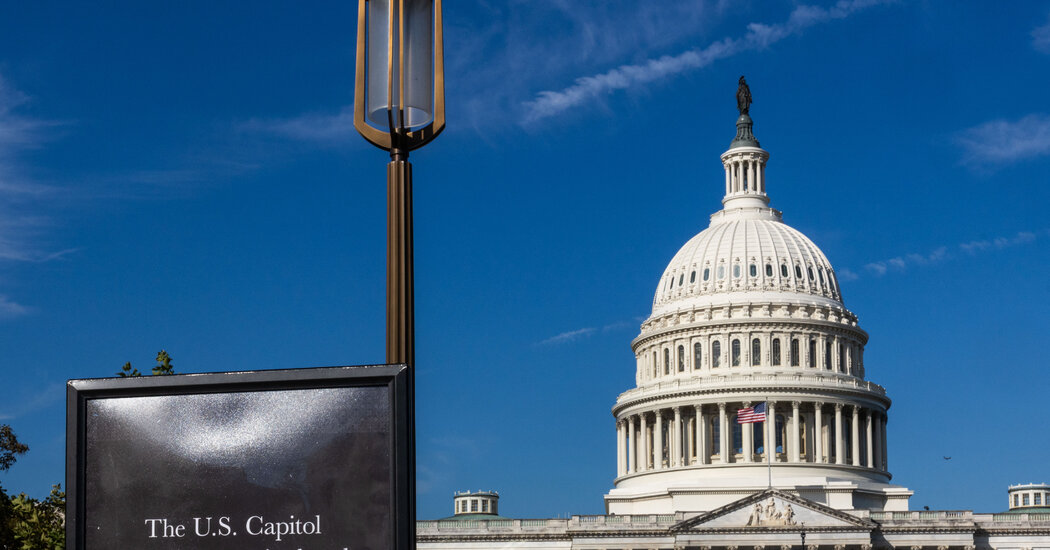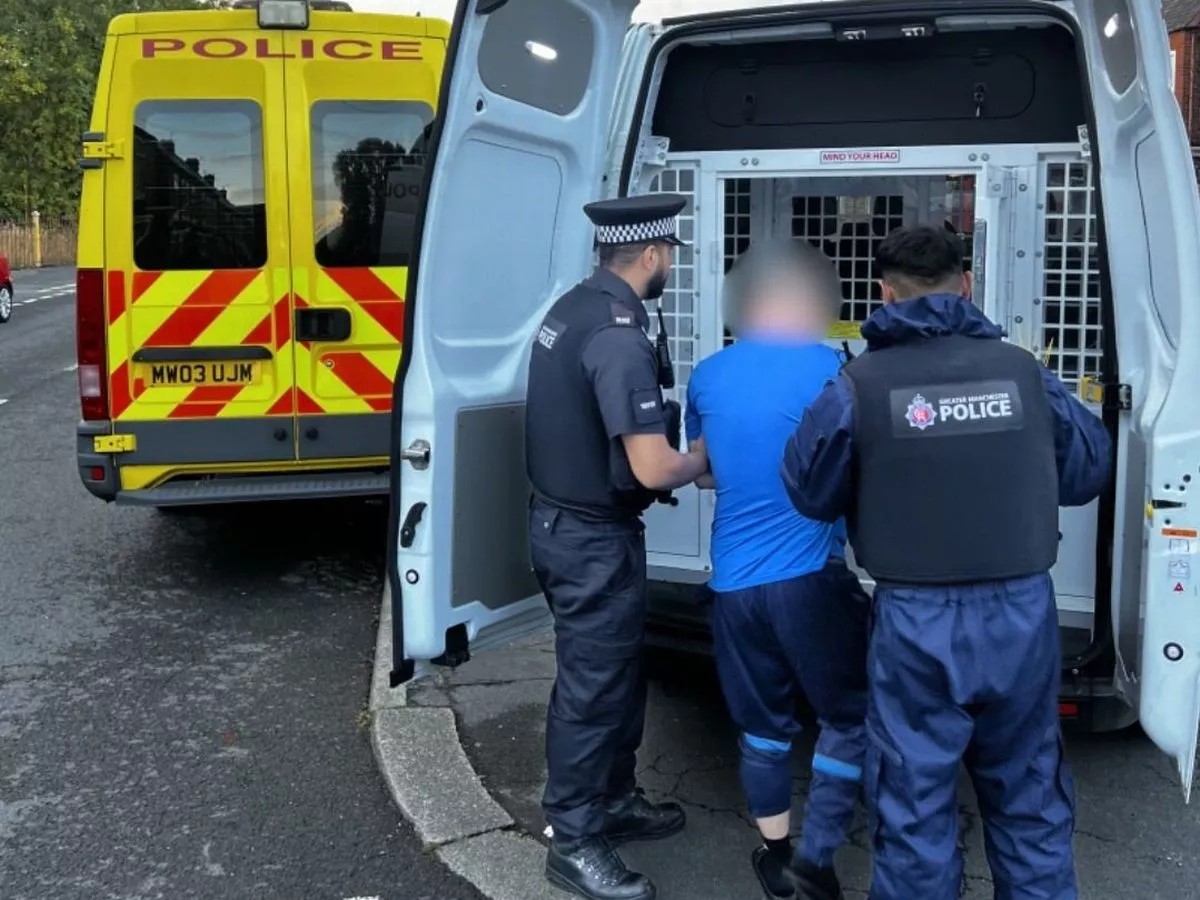
When Republicans forced a government shutdown in 2013, the Obama administration fenced off the Lincoln Memorial and other monuments on the National Mall, while the president himself wrote a letter to furloughed federal workers.
“None of this is fair to you,” he said, amplifying the visibility of the shutdown even as he stoked sympathy for the people most directly affected.
Now that President Trump has a shutdown instigated by Democrats on his hands, his approach could be summed up this way: Be careful what you wish for.
“The last thing we want to do is shut it down, but a lot of good can come down from shutdowns,” he said in the Oval Office on Tuesday, as the government funding clock ticked down. “We can get rid of a lot of things that we didn’t want. And they’d be Democrat things.”
Democrats, who are in the minority in both houses of Congress, have gambled that a shutdown is their best and biggest way to show off a willingness to fight Trump, as they try to kick off a broad national conversation about health care costs that can possibly carry through the midterms. “It’s as good a shot as we’re going to get,” the Senate minority leader, Chuck Schumer, told Michael Barbaro on Tuesday.
But unlike shutdowns past, the president is the wild card. Worry about his intentions is what caused Schumer to pass up his last opportunity to shutter the government. Trump has the bully pulpit, along with a general disregard for the workaday operations of the federal government and a stated willingness to leverage the shutdown itself to punish his political opponents.
There are “a lot of people that are going to be very affected and they’re Democrats,” Trump said.
Today, his administration seemed to begin to make good on that promise.
A threat of selective shutdown pain
Before the shutdown began at midnight, the White House had already telegraphed its intentions to seize on a shutdown to carry out mass layoffs across the government. At a White House press briefing this afternoon, the press secretary Karoline Leavitt said only that they were “imminent.”
At the same briefing, Vice President JD Vance seemed intent on walking back Trump’s comments about hurting Democrats, claiming that the administration is trying to maintain essential services and that, in the case of layoffs, “We’re not targeting federal agencies based on politics.”
But there was a different message coming from another part of the administration this afternoon. My colleague Annie Karni reported that Russell Vought, the White House budget director who has spent years drawing up plans to shrink the federal bureaucracy, held a conference call with House Republicans this afternoon. There, he framed the shutdown as a chance for the administration to rid itself of excess bureaucrats, particularly for programs that don’t fit with Trump’s agenda.
Already today, Vought made two announcements that could be read as a shot across the bow to blue states.
This morning, he wrote on X that the administration was withholding $18 billion in funding for infrastructure projects in New York City, a move with a direct impact on Schumer’s home state along with New Jersey, which in the midst of a nasty governor’s race.
Then, he announced that $8 billion in funding for climate initiatives in 16 states had been canceled by the Energy Department. Not one of those states sided with Mr. Trump in 2016, 2020 or 2024.
A statement from the Transportation Department said the freeze on funds to New York was “thanks to the Chuck Schumer and Hakeem Jeffries shutdown,” which it said had forced the furlough of staff responsible to review the grants for compliance with the administration’s directives on diversity, equity and inclusion. Democrats are calling it retaliation.
“Trump isn’t hurting Democrats — he’s hurting the nurses, teachers, first responders and everyday commuters from New York and New Jersey who rely on safe, reliable transit to get to work, school, to shop and home to their families,” Schumer and Jeffries, the House minority leader who is also from New York, said in a statement.
If Trump wants to go further, he has ample options. The administration could try to eliminate more jobs at the agencies, like the Education Department or the Environmental Protection Agency, that have long been in his cross hairs. It could also move to target funding for blue-state research centers that draw enormous federal funds, like the National Renewable Energy Laboratory in Colorado, the Los Alamos National Laboratory in New Mexico, Argonne National Laboratory in Illinois, or Lawrence Livermore National Laboratory in California.
Trump can make this hurt for blue states, which could lead to political pressure on Democrats to end the standoff. The question is merely how far he wants to go.
The blame game: Some federal departments, including Agriculture and Housing and Urban Development, have updated their websites with language blaming Democrats for the shutdown. Email auto-replies from furloughed workers at the Small Business Administration are also casting blame.
The courts: At federal courthouses across the country, Justice Department lawyers have asked judges to pause their cases, arguing that the department didn’t have enough personnel to handle them because of the lack of congressionally approved funding.
The votes: Two Democratic senators, as well as one independent who caucuses with Democrats, voted with Republicans to avert the shutdown for the second time in two days. Here’s who they are.
ONE NUMBER
65 percent
That’s the share of voters who said they thought the Democrats should not shut down the government in the latest Times/Siena poll. Ruth Igielnik, The Times’s polling editor, has more.
Most Americans didn’t want it to come to this.
In polling conducted late last month, nearly two-thirds of voters sent a message that they wanted leaders in Washington to find common ground.
Among rank-and-file Democrats, though, the poll found a more complicated dynamic — one that helps explain why the party’s leadership took this risk.
More Democrats were in favor (47 percent) than opposed (43 percent) to the idea of shutting down the government to meet their demands. And younger Democrats — those 45 and under, whom the party desperately wants to keep in the fold — were especially likely to want congressional Democrats to move forward with a shutdown.
But for decades since, federal courts have made it clear that immigration agents cannot detain citizens without having a specific, factual basis to believe that a person is living in the country illegally.
Yet, as the Trump administration has tried to reach its stated goal of one million deportations this year, we are seeing evidence that Latino citizens are being questioned and detained because they are suspected of being undocumented immigrants.
In an article we published this week, we found that at least 15 citizens, most of them Latino men, have been stopped and detained by immigration officers. The total number could be significantly higher, but because immigration agents are not required to document the stops of citizens, no comprehensive data is available on exactly how often this happens. Many Latino citizens have begun carrying a passport at all times out of fear of being detained, though in at least one case that did not stop officials from doing so.
The question of whether or not this is legal is tied up in the courts. Earlier this year, a federal judge in Los Angeles ordered a halt to stops based on apparent race or ethnicity. But the Supreme Court put that order on hold, allowing federal agents to continue them.



